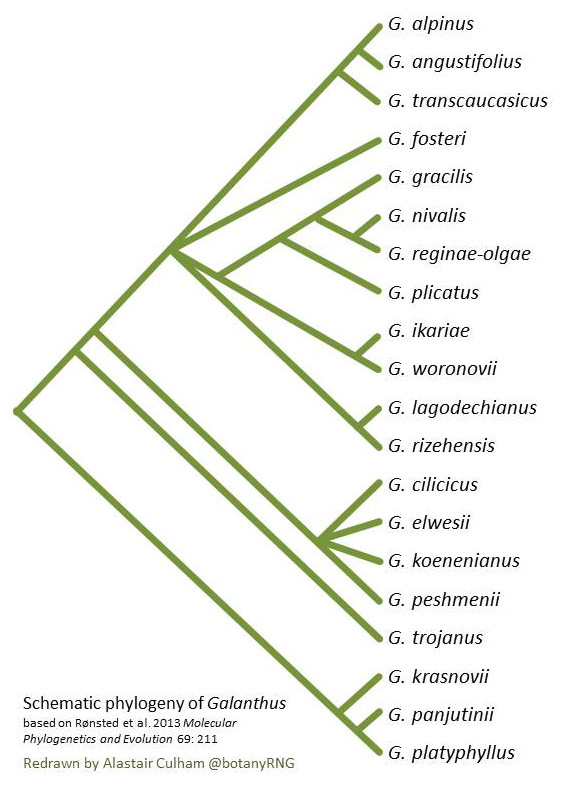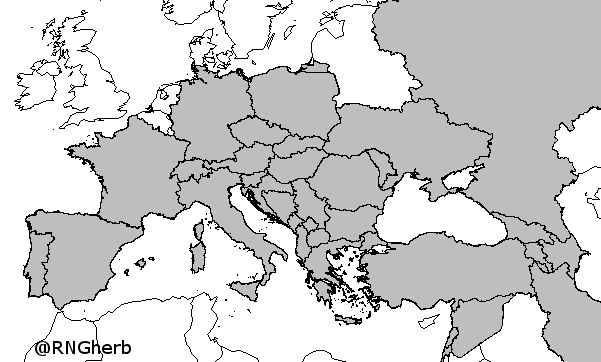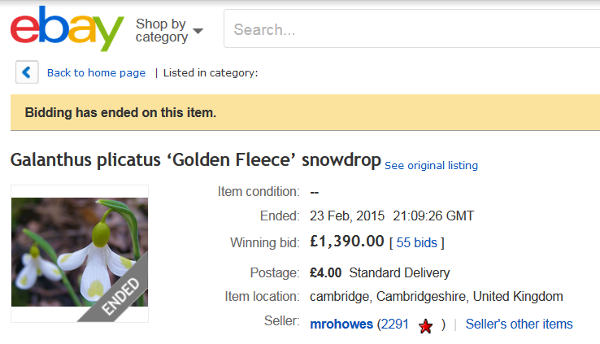By Alastair Culham
It’s not a heavy metal band, but Galanthophilia sounds as if it could be. It is the name for those with a true love of snowdrops. These tiny plants contain a treatment for mild Alzheimer’s Disease called Galantamine, but that can also be found in Narcissus and other related plants. This blog is not about medicine, it is about obsession.
Many gardeners think of snowdrops as a sign of spring, looking forward to the great white sheets of Galanthus nivalis that brighten up January and February in the UK but there are other less known species with different characters.
Perhaps one of the first true Galanthophiles was E.A. Bowles, a Victorian gentleman and long time member of the Royal Horticultural Society who is commemorated in two snowdrop cultivars: Galanthus plicatus ‘E.A. Bowles’ and Galanthus plicatus ‘Augustus’. Sadly his writings focused on Crocus and Narcissus.
The first snowdrop species into flower each year is G. reginae-olgae, discovered in Greece in 1876, which starts flowering in September and can continue into December. It is larger than the common snowdrop and it’s leaves are slightly greener however it does make a beautiful plant for the garden and is easy to grow. Given it’s flowering season it is truly an Advent snowdrop!
But these two species are only 10% of snowdrop diversity, there are 20 species of Galanthus spread around Europe, western Asia and the middle east. All species have a similar basic appearance of strap like green or grey-green leaves with nodding white flowers but there is a lot of variation in the detail.Their relationships and species limits have been the subject of study for a long time and the botanist, and University of Reading alumnus, Aaron Davis has perhaps studied them most closely over the past three decades while working at Kew. Understanding of the species relationships is now based on DNA sequence work.
Galanthophilia
Species diversity is not the end of the story with snowdrops; novel cultivars (selections made by growers and breeders) are the great desire of snowdrop enthusiasts (people known as Galanthophiles). It is here that you begin to realise what an obsession snowdrops can become. One of the most impressive illustrations of what is becoming snowdrop fever is the list of prices paid for new cultivars:
2011 a single bulb of Galanthus plicatus ‘E.A. Bowles’ sold for £350 (a cultivar raised at Myddelton House, Enfield)
2012 a single bulb of Galanthus woronowii ‘Elizabeth Harrison’ sold for £725
2015 a single bulb of Galanthus plicatus ‘Golden Fleece’ sold for £1390 plus £4 p&p on ebay.
So, as you enjoy those delicate white flowers each winter, have a good look in case you have the latest new snowdrop cultivar in your garden. That would be a really good Christmas present!
References
Bishop, M., Davis, A.P. & Grimshaw, J.M. (2001). Snowdrops: a monograph of cultivated Galanthus. Maidenhead: The Griffin Press.
Rønsted, N., Zubov, D., Bruun-Lund, S., Davis, A.P. (2013) Snowdrops falling slowly into place: an improved phylogeny for Galanthus (Amaryllidaceae). Molecular Phylogenetics and Evolution. 69: 205-17


![By Meneerke bloem (Own work) [GFDL (http://www.gnu.org/copyleft/fdl.html) or CC BY-SA 3.0 (http://creativecommons.org/licenses/by-sa/3.0)], via Wikimedia Commons](https://blogs.reading.ac.uk/crg/files/2015/12/450px-Galanthus_reginae-olgae_clump2.jpg)


Pingback: AdventBotany 2015 – Day 2: Yule Log – a carbon neutral heat source? | Culham Research Group
Pingback: Advent Botany 2015 – Day 4: Lore of Hazelnuts, Corylus avellana | Culham Research Group
Pingback: Advent Botany 2015 – Day 3: Galanthophilia « Herbology Manchester
Pingback: Whewell’s Gazette: Year 2, Vol. #21 | Whewell's Ghost